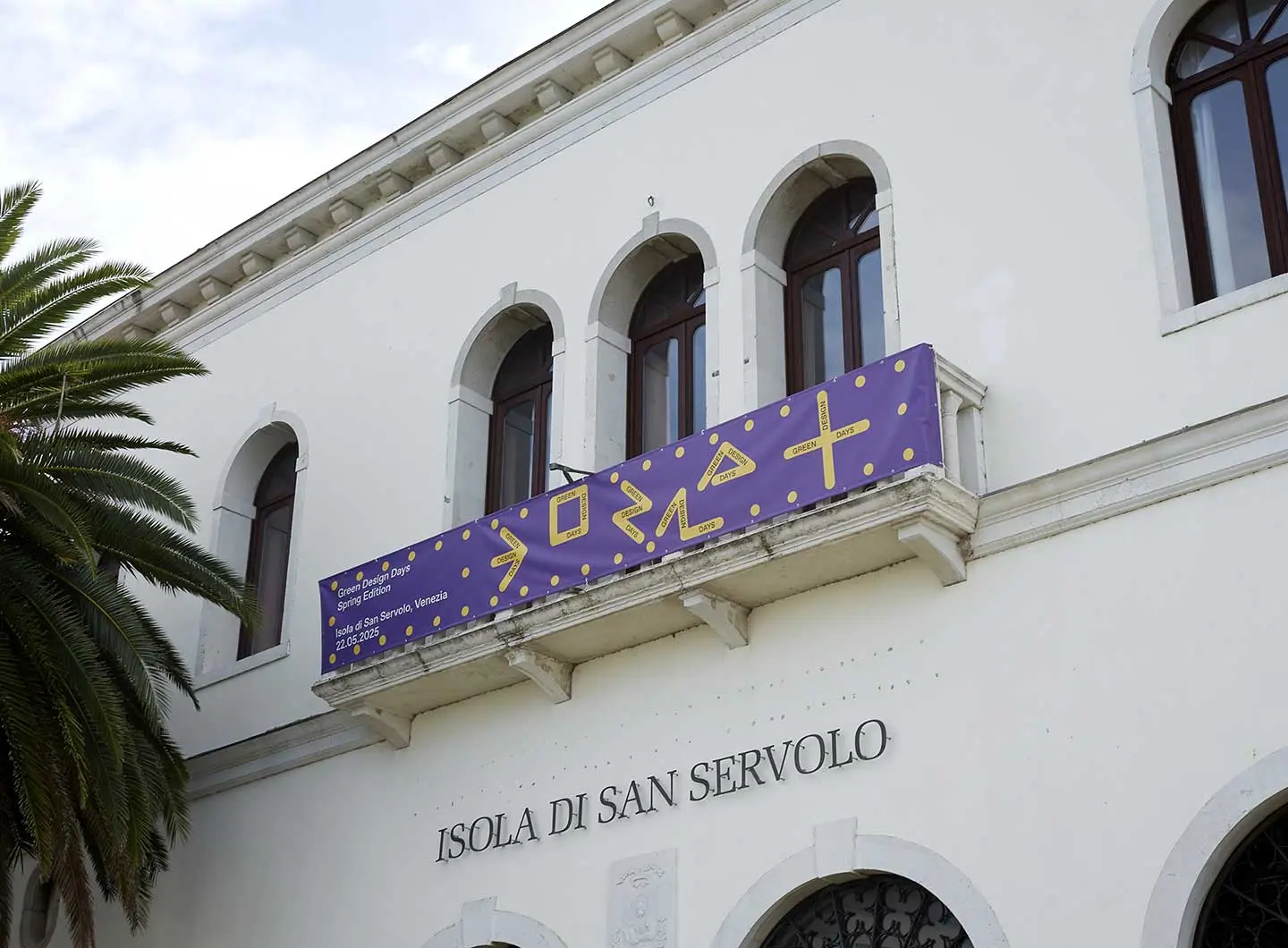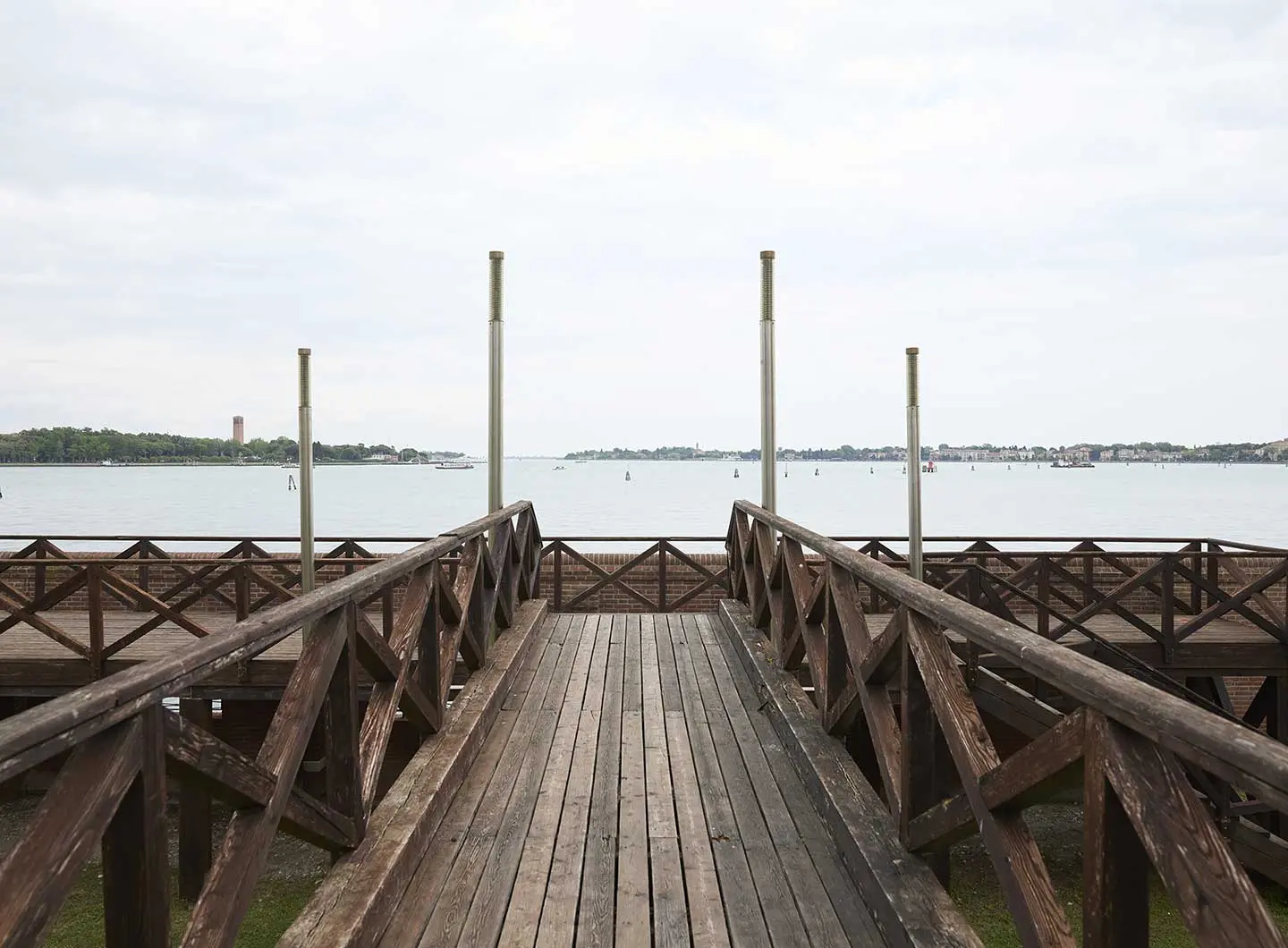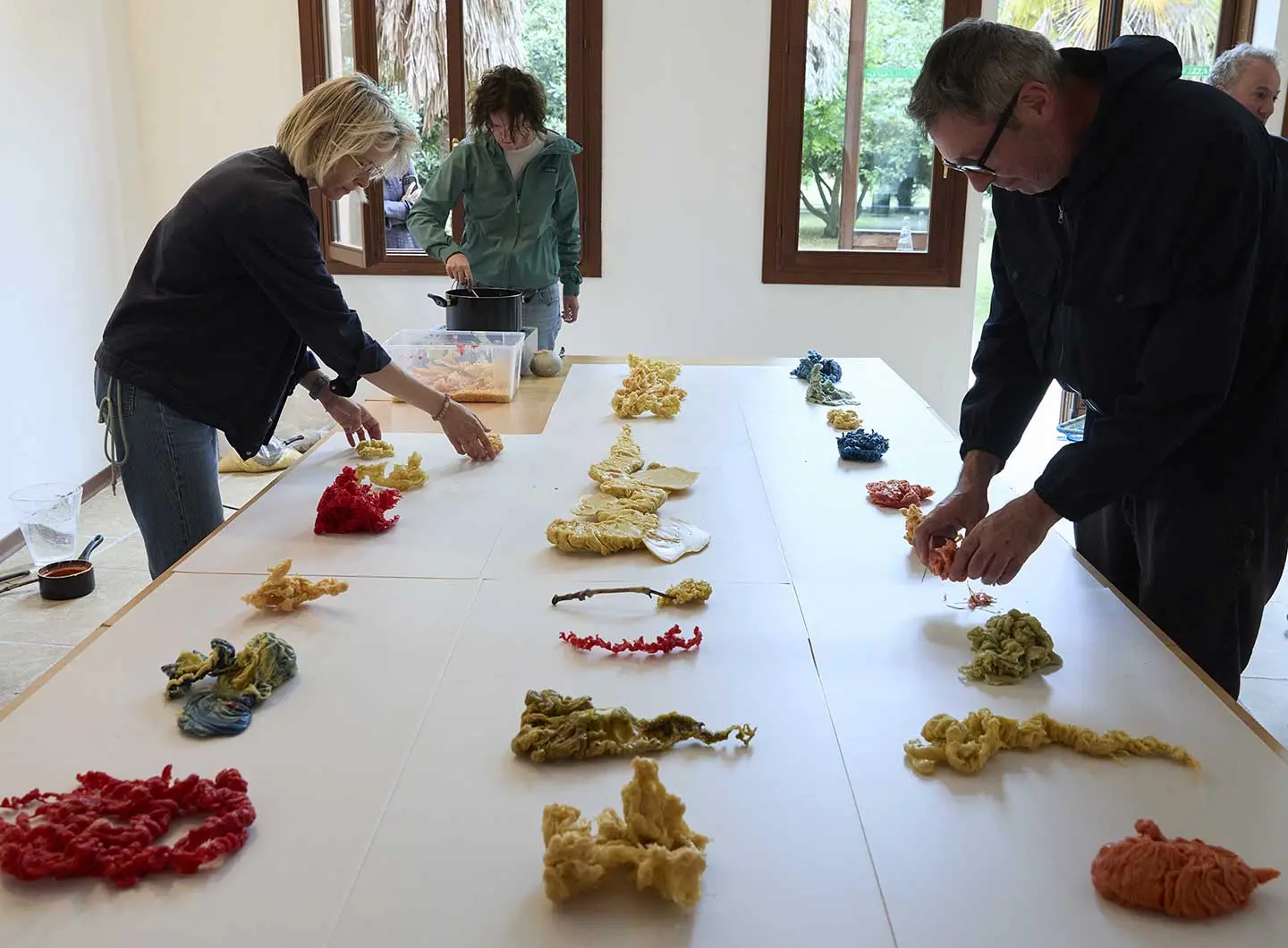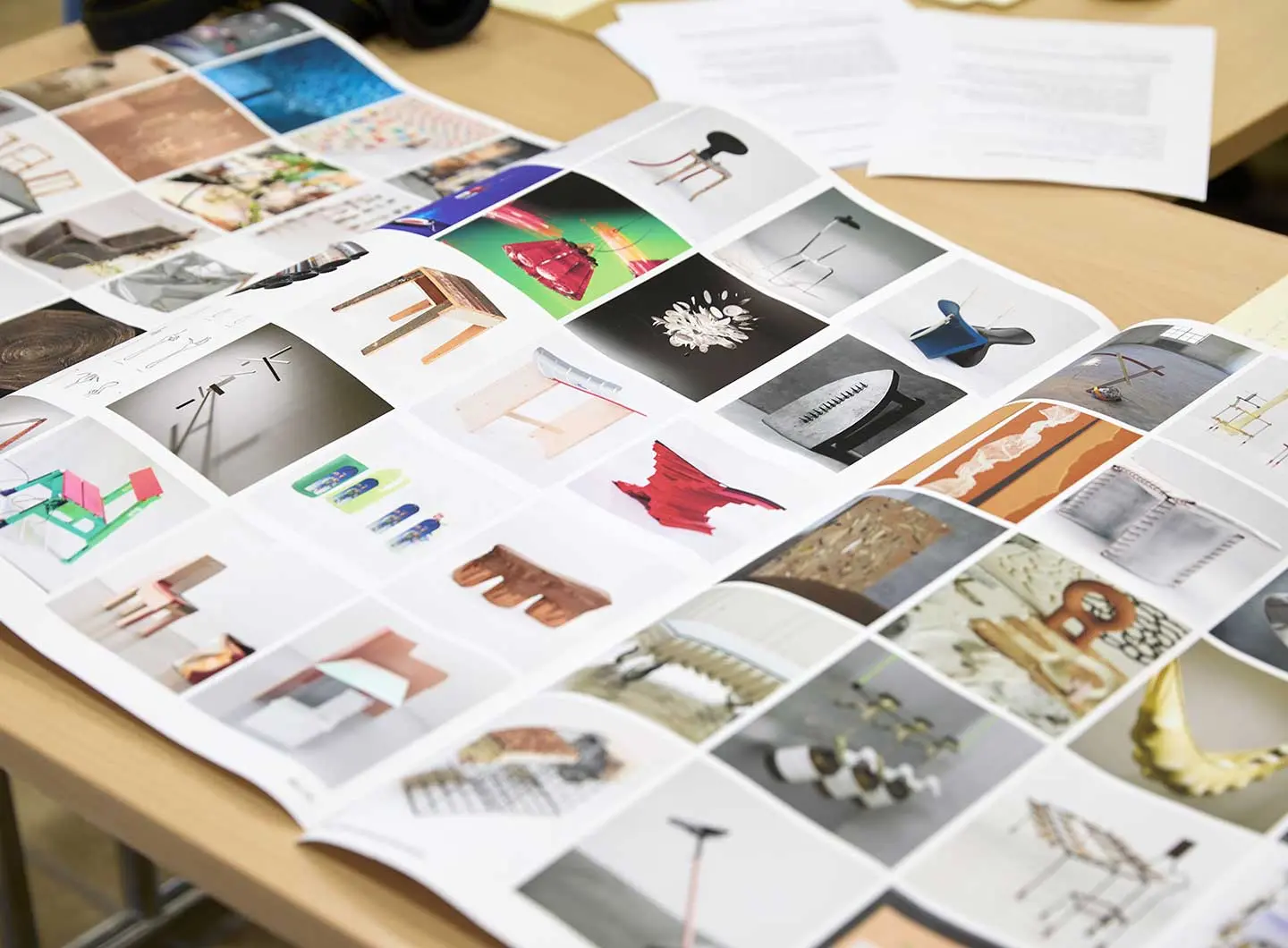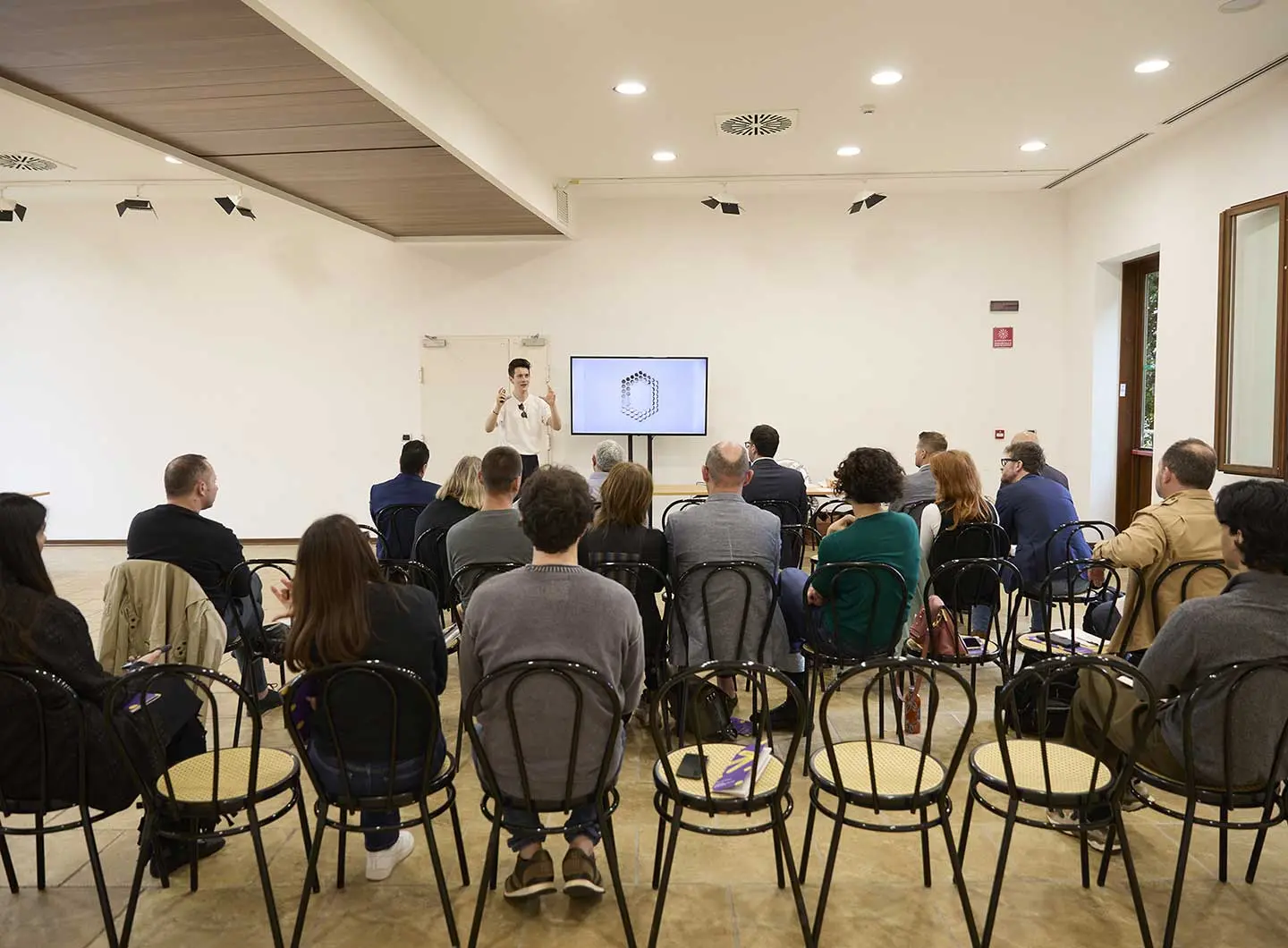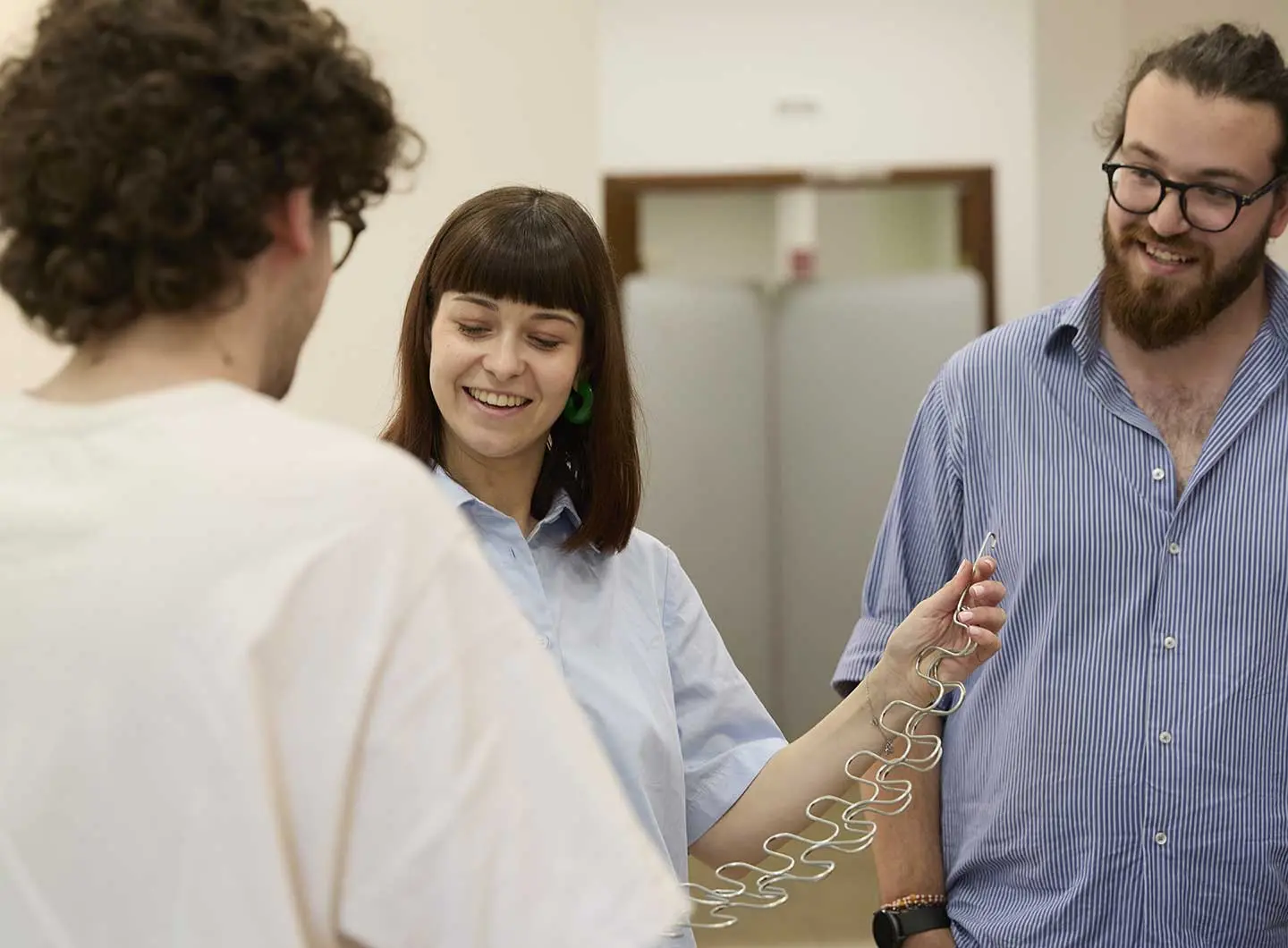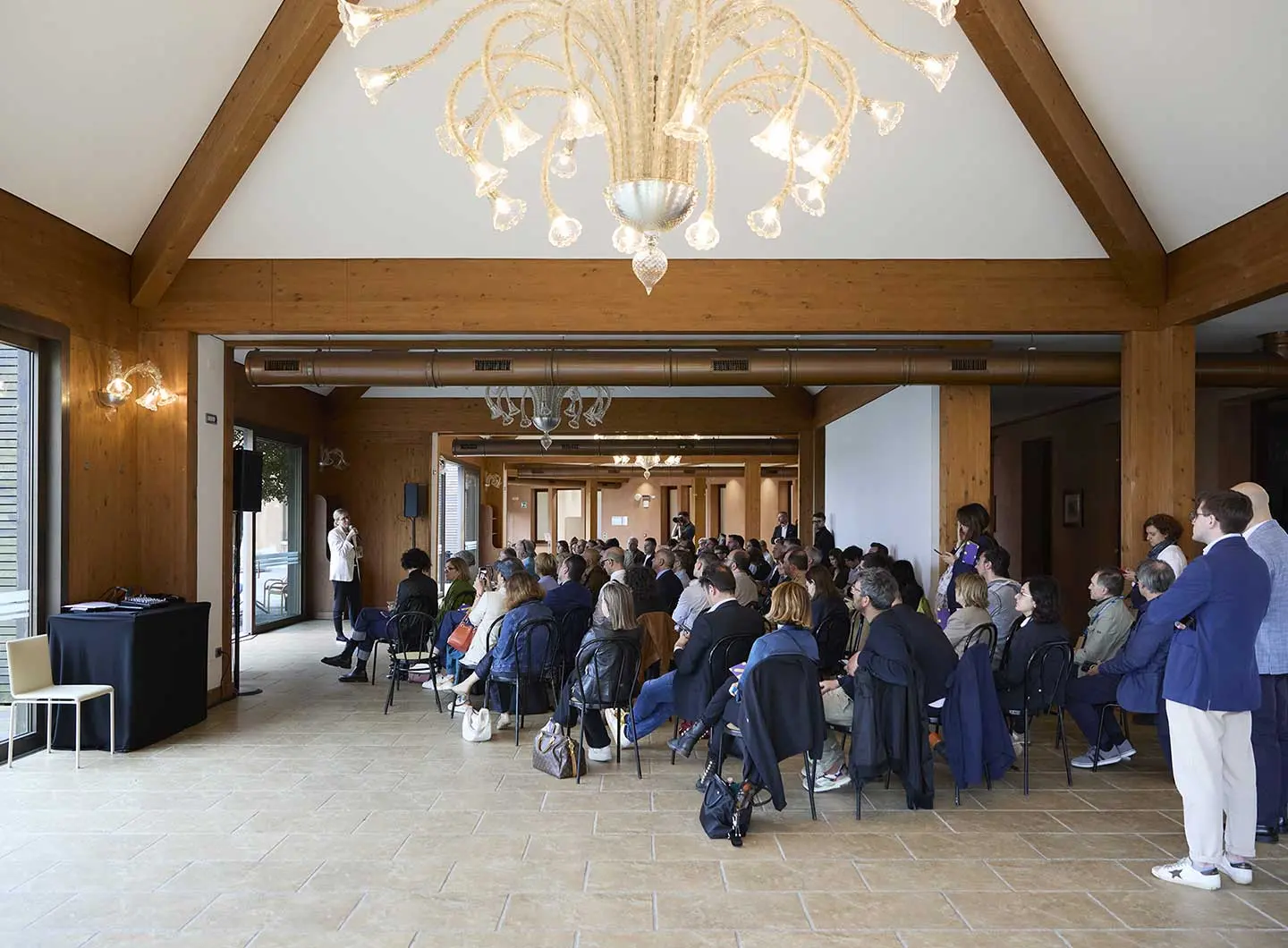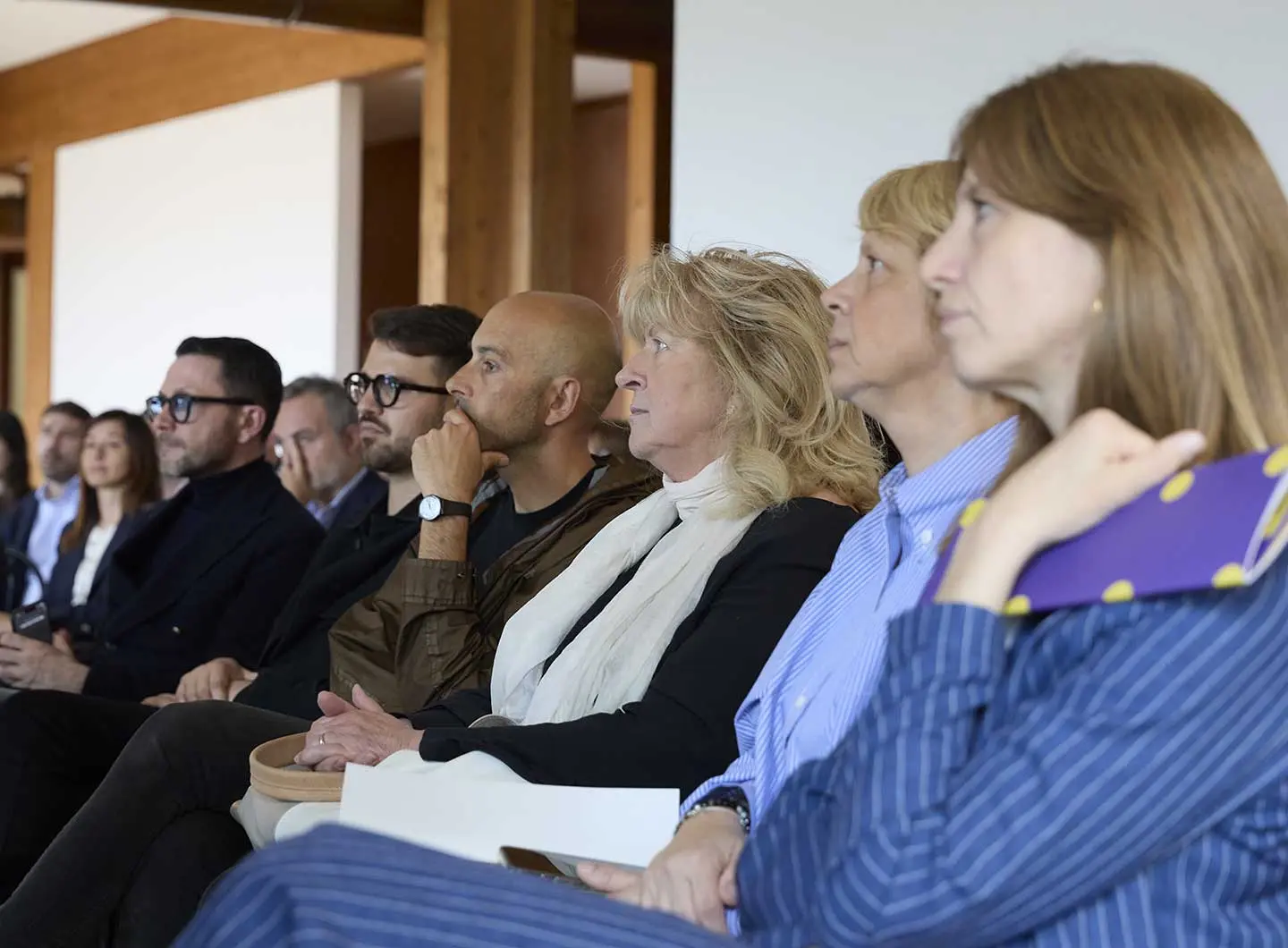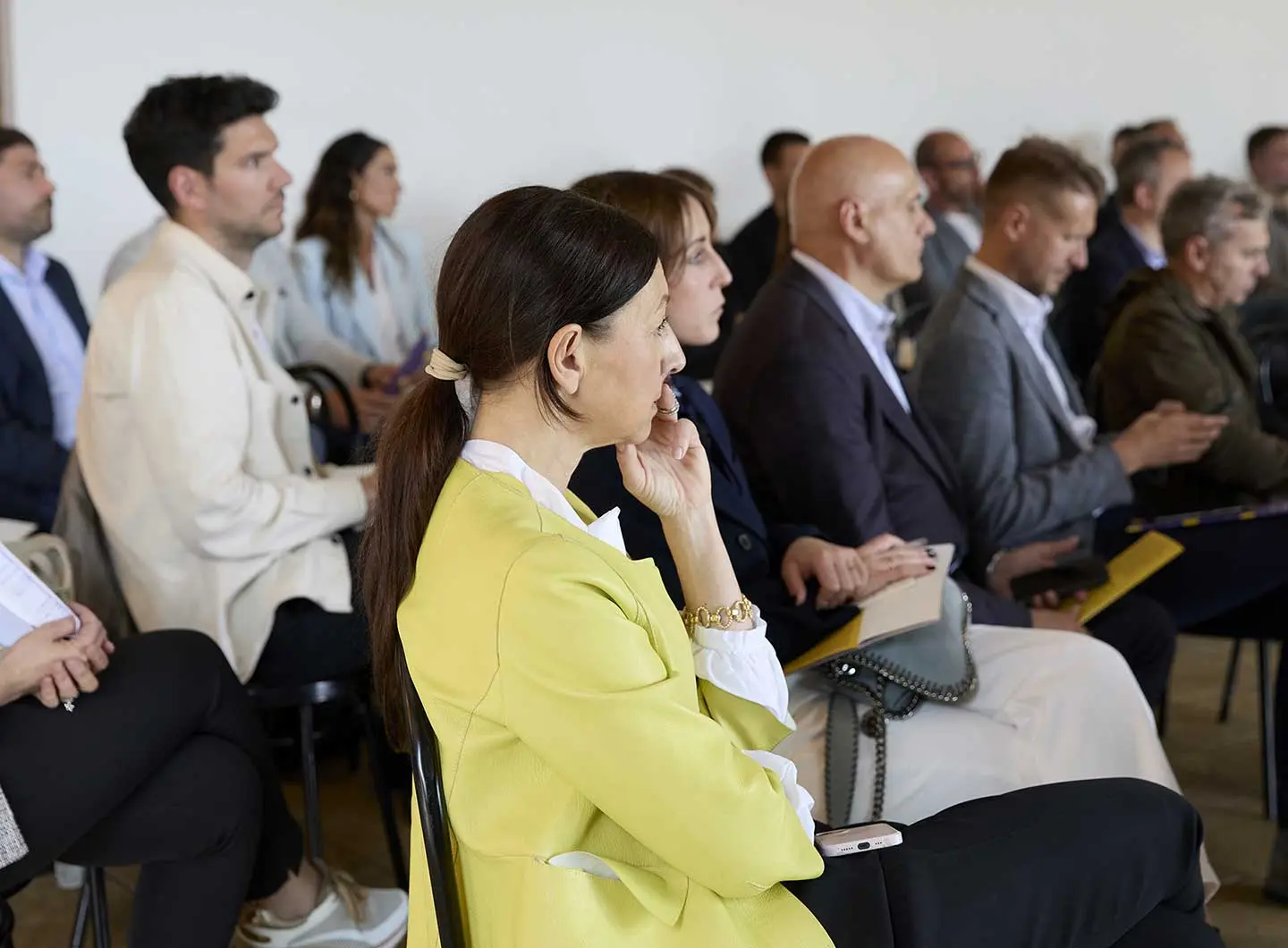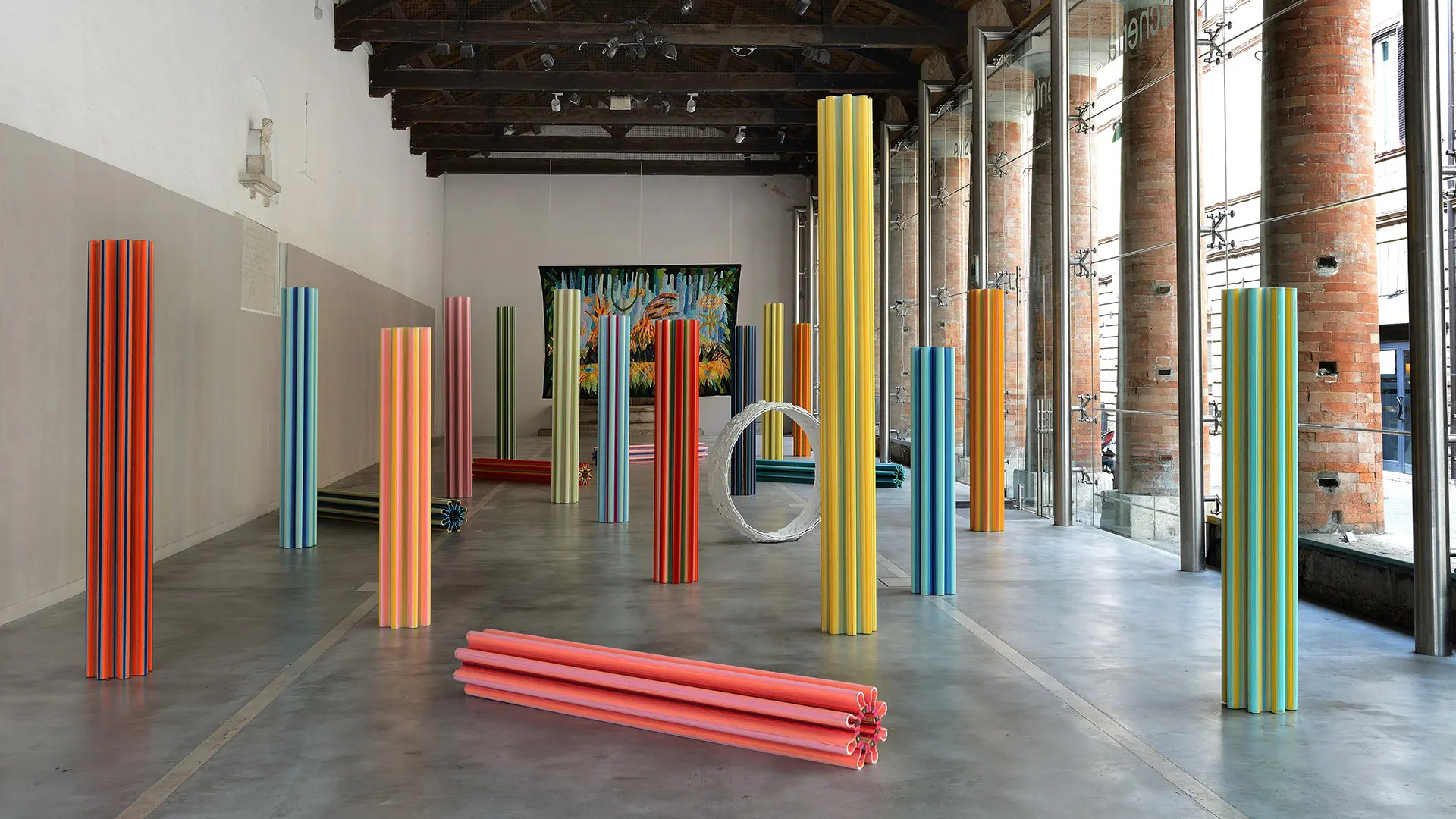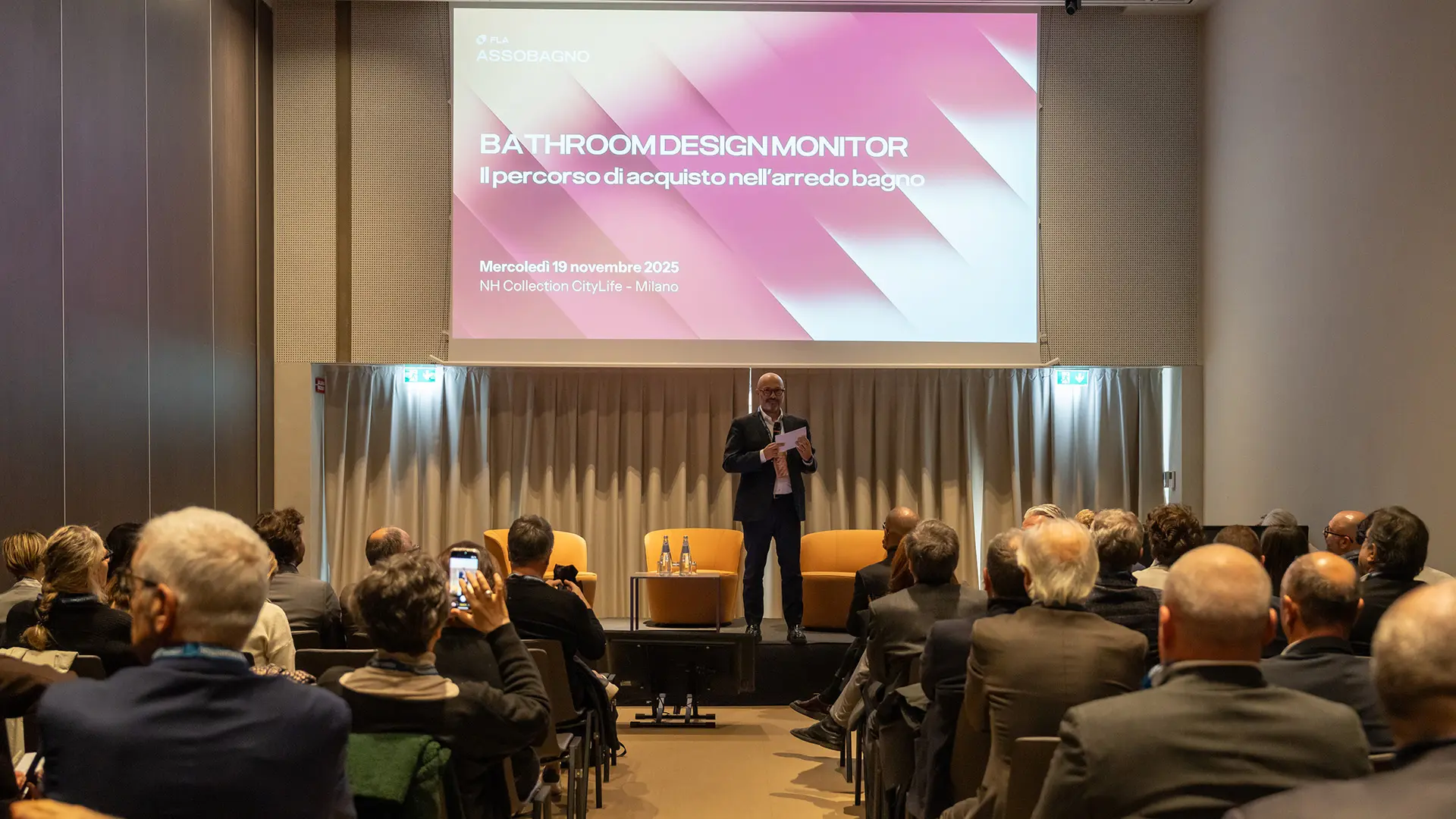They are all Italian and all in some way draw on the theme of memory. This is true even when they deal with current sporting events associated with the imminent inauguration of the Winter Olympics. There are ten of them and for the most part they are held in the most reserved cultural circuits, outside the mainstream. It’s even better when they’re out of town, bringing historic residences to life with gleams and flashes of good design
How to tell the story of environmental, economic and social changes?
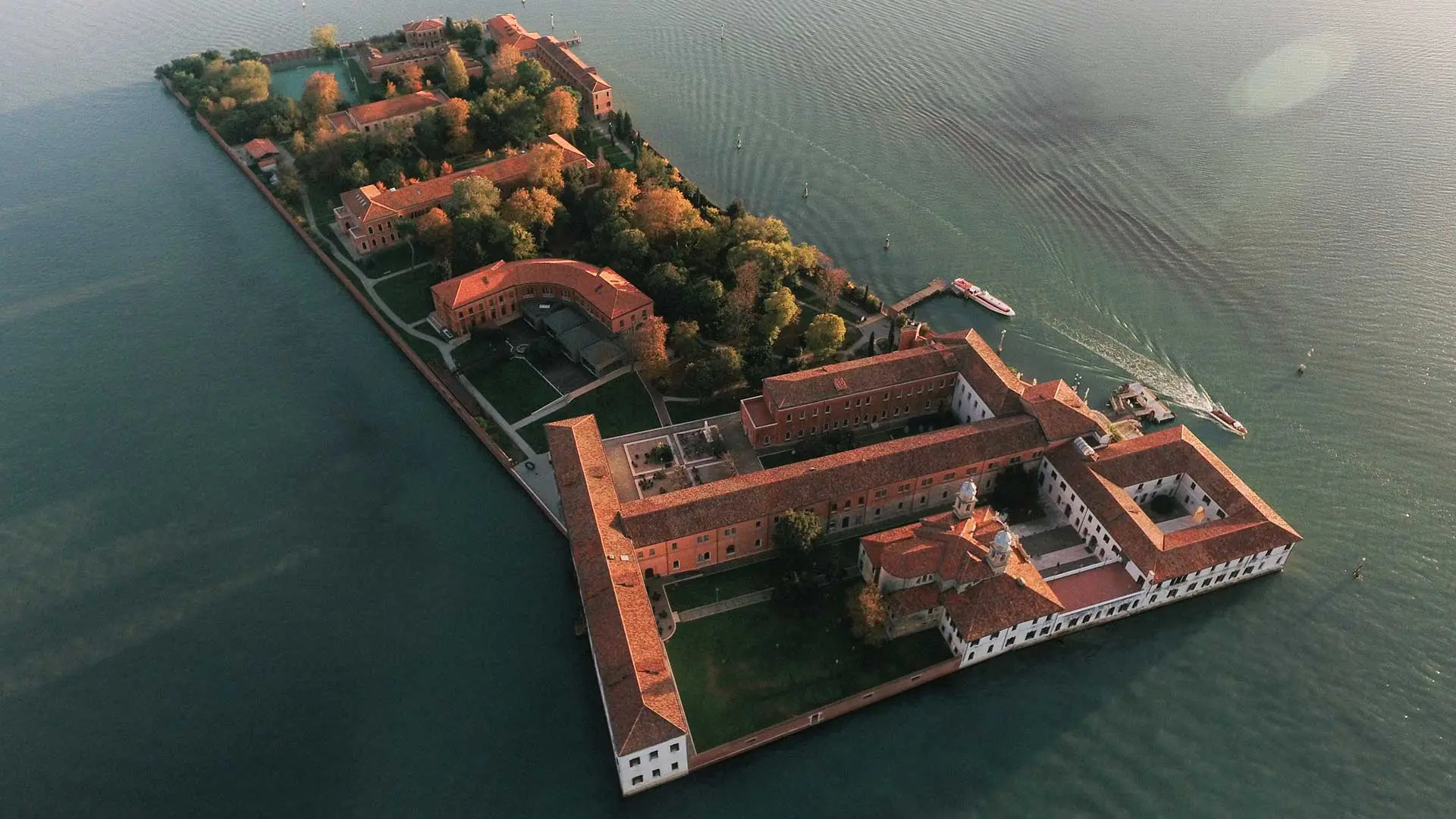
Isola di San Servolo - Ph. Gaspar Matheron
Green Design Days 2025, FederlegnoArredo’s multi-site festival hosted on the island of San Servolo, was an opportunity to discuss the sustainability of the design industry. Here is an account of events on Thursday 22 May
Just twenty minutes from Venice, the Island of San Servolo is rich in history and fascination. Over the years, it has undergone multiple transformations as a result of the historical and social changes that have shaped its identity. Originally the island was occupied by a community of Benedictine friars, then it was later converted into an important psychiatric hospital. This closed down on 13 August 1978 as a result of approval of the Basaglia Law. Today San Servolo is a lively cultural center, embedded in the lagoon and immersed in greenery. A fascinating setting where time seems to stand still, its quiet broken only by birdsong amid the more than 400 varieties of plants, including tall trees and exotic and native species.
On Thursday 22 May, the island was the setting for Green Design Days 2025 on the Venetian stopover of the itinerary. The festival is a project of FLA Plus, the sustainability path of FederlegnoArredo, which this year celebrates its 80th anniversary. FLA Plus was launched in 2020 to work with companies in the design industry to embrace the environmental, energy, social and economic transitions. The event was an opportunity to explore the combination of design and sustainability in a structured way and in depth, recognizing that “discovering what sustainability means calls for a plurality of approaches and listening, constantly growing and evolving”.
The workshops: an interactive way to learn with experts in the field
The day’s schedule involved guests in a morning devoted to experimentation, with three workshops offering unique opportunities to relate to the local setting and reflect on new design approaches. Among these was Lacuna, headed by the curator Angela Rui and Professor Massimo Barbierato, who accompanied the participants on a journey to learn about the invisible forces of water. A simple exercise, which thanks to the use of liquid beeswax, in the interaction with the liquid matter, made it possible to create unique objects shaped by the power of water. “We were struck by San Servolo’s angular perimeter. An island, by its nature, is never geometric in shape. Here, however, the topography is Cartesian, rational. It is as if the island were a metaphor for society, which is confined in relation to nature,” observed Barbierato. And Rui added: “San Servolo has always represented a form of closure, introspection, confinement. With this workshop we have chosen to investigate the dynamics of water, exploring design as a sensitive tool, capable of capturing and translating imperceptible forces.”
Innovating products and production processes with additive manufacturing was an in-depth study of how to hybridize technical, digital and manufacturing skills, promoted by Designtech with Ivan Tallarico, Rodrigo Brenner (Furf) and Simona Arena (Puntozero). Finally, with Transformative Scales of the Fragment, as part of a project divided into several stages between Venice and Cortina, the students of the Italian School of Design in Padua explored the industrial design objects originally conceived for the ENI Village, produced in the 1960s by some of the most famous companies in the history of design. The project was created in partnership with Dolomiti Contemporanee, Progettoborca, Stefano Collarin, Tommaso Russo, Lorenzo Barbasetti di Prun and Fabio Talloru. On July 12th, there will be a guided tour dedicated to ENI's social project for its employees, with a focus on the industrial design that shaped its development.
Companies have their say: what does sustainability mean in the life of a business?
In the afternoon, space was given to the experiences of FederlegnoArredo’s member companies, which presented a concrete overview of good practices in the field of sustainability. The speakers were the leading figures themselves: technicians, heads of R&D departments, sustainability managers and designers, so staging the value of direct experience. From the design phase to production, passing through the innovation of materials, energy efficiency and the optimization of production processes, their statements traced a complete path all the way to the finished product. The talks presented a dynamic and evolving image of the design industry, engaged in a profound transformation towards increasingly conscious and responsible models of production.
The work tables were introduced by the Milanese designer Alessandro Stabile, who presented the genesis of three projects created for laCividina, S•CAB and Magis. The focus was on design and creative history, on sustainability understood as logistical optimization, with improvements in the operational phases.
“We like to think that sustainability plays a role in everything we do,” said the second guest of the day, Andrea Mulloni, Head of Sustainability at Arper. “A concrete example is the Catifa Carta chair, created as an evolution of the iconic Catifa 53 designed in 2001 by the studio Lievore Altherr Molina. We exploited the potential of a material developed internally by our R&D department, so leading to an innovative project that has enabled us to reduce C02 emissions, thanks also to an optimized system for the management of the product’s end of life. For us, circularity means taking responsibility.”
Marco Fantoni, Managing Director of Production and Technologies at Fantoni, agrees with this vision, pointing out the importance of having an all-around perspective. “Care for sustainability and circularity is also important in the workplace, a value that we have always tried to promote in our factories. In this respect, Studio Valle has supported us along the way by taking care of the design of our factories. And from the point of view of materials, innovation at Fantoni involves the production of MDF from waste: a simple idea, but one never explored before.”
Drawing attention to the issue of circularity in the field of awnings was Sara Selmin, Sustainability Manager at Giovanardi. As she explained, “With Raytent we developed a recycling process that uses waste from the manufacture of awnings. By combining these materials with virgin fabrics, we have derived a new product suitable for high-efficiency spinning with qualities comparable to those of a non-recycled fabric.”
Gabriella Di Feo, Marketing and Communication Manager of Rinaldi Group, said: “The company has been working for years by equipping itself with dedicated certifications and it is a benefit company. When we talk about circularity, by its very nature, the mattress is a product that is not easily recovered. For us, the drive towards circularity is predominant: on the one hand, through continuous research into materials for greater comfort, and on the other by greater eco-compatibility. In this way we want the mattress as a product to be used intelligently. In all the phases of its life.”
“Since 1961 we have taken part in the Salone with conviction. We strongly believe in the importance of working with the trade associations.” Eleonore Cavalli, Art Director and Co-Founder of Visionnaire, opened her speech with these words, placing the stress on a beneficial and ethically guided path. “Today we have 40 craft hubs throughout Italy and we spread our excellence and values worldwide. We process over 200 materials and have a catalogue with more than 2,000 products. We have invested with determination in the complete mapping of our production chain — from process to production all the way to end-of-life management.” A central factor is the active involvement of the craftworkers, true custodians of manufacturing knowledge: “We explained to them why it was essential to grow and improve together. We have chosen to adopt various certifications and we publish sustainability reports, to show it is possible to take concrete action to reduce our impact.”
Concluding the work table was Marco Zavagno, designer and co-founder together with Enrica Cavarzan of Zaven, a multidisciplinary studio founded in Venice in 2008. His speech, starting from case studies such as S•CAB, Bolzan and Nike, focused on the design method practiced by the duo, who for over 15 years have been carrying out an idea of research that can bring added value to the growth of the studio as well as for the client. “In our practice as designers we are looking for new ways and new thoughts, working right across the board between communication, design and art.”


 Salone Selection
Salone Selection
